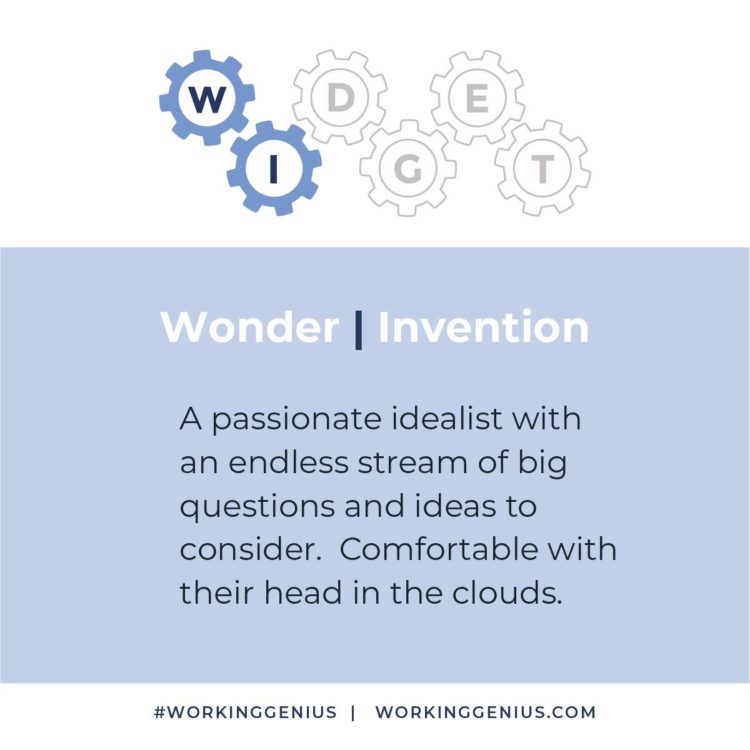I always had a short shelf-life in my jobs. I’d start out strong and around the four-year mark I became restless and bored. My attitude wasn’t optimal and the desire to move on would grow. I knew I was happiest in a creative state but became less engaged when my projects were complete, and I was in a state of maintenance. I now have the language to know why I didn’t stay long in my positions through The Six Types of Working Genius.
The model and the assessment have existed for over two years, but a few weeks ago, best-selling author, Patrick Lencioni, released his book on The Six Types of Working Genius. The book notes that we have two working geniuses, two working competencies, and two working frustrations. All six geniuses are necessary to have a strong and productive working team. The geniuses are:
Wonder: The ability to think of the big picture and wonder how something could be different or better.
Invention: The ability to come up with ideas and problem solve.
Discernment: The ability to intuitively know if something is a good idea or not.
Galvanizing: The ability to rally or inspire people around an idea or initiative.
Enabling: The ability to do the work necessary to bring the idea and support the project.
Tenacity: The ability to finish or push an idea or initiative across the finish line.
My business partner, Ayako Ohtake, is certified in The Six Types of Working Genius and we’ve offered it as a service through Brave Birds Studio for over two years. My working geniuses are Wonder and Invention. My working frustrations are Galvanizing and Enabling.
Going back to my work experience, I loved the challenge of starting a new position, especially when I was tasked with building something from scratch. For example, the branding project I did with Alberta Pensions Services, or the creation of the First Nations and Métis Women’s Councils on Economic Security at Indigenous Relations with the Government of Alberta. These initiatives inspired and energized me as my geniuses of Wonder and Invention were fully engaged.
My working frustrations, Galvanizing and Enabling, showed up in exasperation over people not getting the importance of these initiatives and what seemed to me to be the tedious day-to-day details required to implement these initiatives. I worked at galvanizing, but it drained me of my energy. At the same time, I was grateful I had staff with the genius of enabling (although I didn’t know what to call it back then), in both cases, to give life to these important initiatives.
Having my own business allows me to engage my geniuses more often and be more strategic about when I use my working frustrations. I need to use all of the geniuses at certain times, but knowing which ones energize me and which ones drain me helps me organize my day more effectively.
The Six Types of Working Genius is a game-changer in how your teams show up at work, the geniuses they bring to the table and the frustrations that might be burning them out. Contact Ayako@bravebirdsstudio.com or Tracy@bravebirdsstudio.com for more information on the 6G assessment, building effective teams, boosting morale, maximizing energy, improving hiring practices, increasing productivity and having better meetings.
